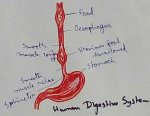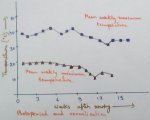Classify an Unknown Specimen
Steps that are taken to classify specimen can be divided into different categories. They are:
Step I: According to the cellular number - There are different types of organisms. Some of them are unicellular means they are made up of one cell. Others are multi-cellular (made up of many cells) and have complex structure.
Step II: According to body symmetry - Body symmetry is a vital thing. As different organism’s body can be divided into different asymmetrical, symmetrical, bilaterally symmetry, radially symmetrical. Asymmetrical structure means whose body cannot be divided into different equal halves. Like amoeba, it is unicellular and its body cannot be divided into different equal halves. Symmetry means body can be divided into different equal halves. Any vertebrate’s body can be divided two equal halves and are called bilaterally symmetry. Radially symmetrical animals are those organisms whose body can be cut from the any side to get same equal halves. Star fish are radially symmetrical.
Step III: According to presence of coelom - According to presence of coelom specimen can be sub divided. Primitive organisms do not contain any coelom. So, they are called a coelomate. In nematodes true coelom is absent thus they are called pseudo coelomate. From the phylum annelids true coelom are present. Thus they are called coelomate . Higher animals also contain coelom or body cavity. In insects, earthworm, do not have blood vessels as the blood in their body release directly in the coelom.
Step IV: Types of coelom- Entero coelom or Schizocoelom. Enterocoelosis is the process of developing embryo. Here middle layer is formed called mesoderm and from there the layer pinched of to produce coelom. Schizocoelom is the other process of developing embryo. In which mesodermal layer of embryo splits and form coelom. These types of organisms are called pseudocoelomate.
Step V: Tissue level organisation- Many cells are associated to form tissue. Many cells that are of same type functionally or structurally are associated to form tissue. Different tissues are there. In plants tissues are of two types Meristematic and permanent tissues. In animal tissues are epithelial tissue, connective tissue, muscular tissue, nervous tissue. Each of the tissue is associated with different functions in the body of different organisms.
Step VI: System development – Different types of tissues are associated to form different organs. Organs are associated with different functions. Such as lungs are for blood purification, kidney for filtration and removing waste materials, heart for pumping blood and provide to different parts of the body. Different organs are associated to form different system. Number of system increase with the increase of complexity of the body of organisms.
Step VII: According to presence of body cavity- Body cavity is present generally in higher animals. Body cavity is made up of space filled by fluid (except the blood vessels and lymphatic vessels). It is the largest in human.
Step VII: According to presence of vertebral column- Vertebral column are present in case of Chordates because there are notochord is replaced by the vertebral column. Absence of vertebral column is observed in non chordates.
From Classify an Unknown Specimen to HOME PAGE
Recent Articles
-
Eleventh Grade | Eleventh Grade Science | Eleventh Grade Math
Jun 27, 25 12:26 AM
Eleventh grade biology has been designed in accordance with the recommended topics. We will cover all the topics in biology very exciting and interesting way. -
Explain Digestion of Food | Salivary Glands | Oesophagus | Stomach
Jun 27, 25 12:20 AM
Before the digestion is start by the different enzymes secreted from the different digestive glands food must be turned and chut or mixed with saliva inside the mouth. -
Explain Human Digestive System | Mouth | Tongue | Pharynx | Teeth
Jun 21, 25 01:15 PM
Digestive system is a system of alimentary canal and digestive glands. Alimentary canal- alimentary canal is a tube of variable diameter having muscular wall and glandular epithelial tissues which sta… -
Vernalisation in Plants | Definition | Mechanism | Devernalization |
Jun 18, 25 01:34 PM
Definition of vernalisation- The change of flowering habit due to the low temperature treatment is known as vernalisation. This is a physiological process which was denoted by Clipart in 1857 invite b… -
The Food We Eat | Food we Get from Plants and Animals | Carbohydrates
Jun 15, 25 03:20 PM
What are the food that we should eat? Find out the names of ten food items in the word maze. Write the names in the correct column of the table given below. Food we get from plants Food we get from an…




New! Comments
Have your say about what you just read! Leave me a comment in the box below.